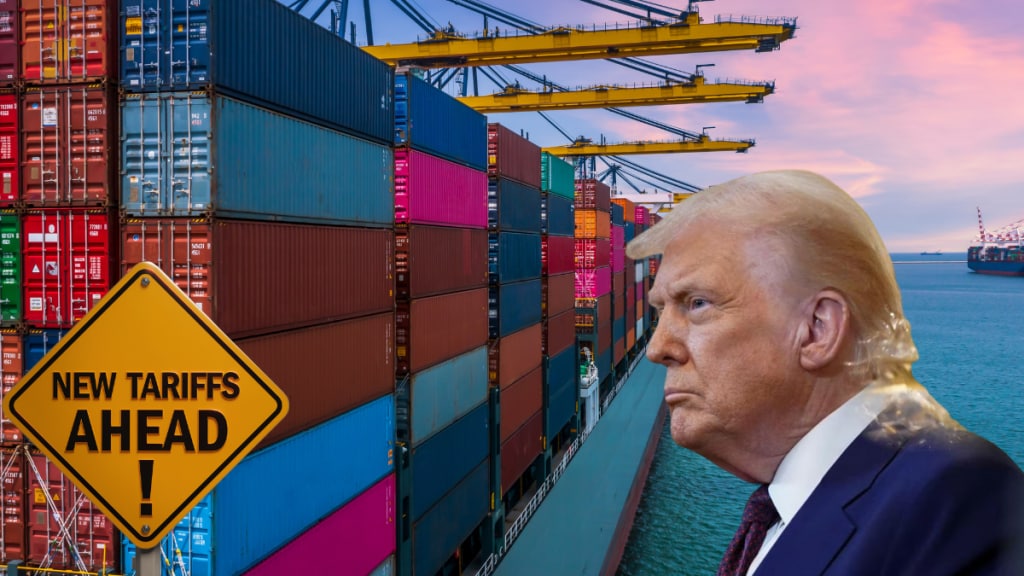By Prabir De
President Donald Trump signed an executive order earlier this month, imposing an additional 25% tariff on India for its imports from Russia, thereby raising the total tariff level to 50%. This World Trade Organization (WTO)-inconsistent tariff, whose implementation was notified by the Trump administration on Tuesday, is going to heavily affect India’s $48.2-billion merchandise exports to the US. The merchandise exports account for almost 60% of India’s export to the US. The US has already raised the tariffs for all other trade partners with a variation between 10% to 50%.
There is no doubt that the higher tariffs imposed by the US on its trade partners could negatively impact the world economy. In particular, the US’s 50% tariff on India may cause downside risks to the country’s growth. Such a high tariff may also pose risks to India’s aspiration to become a developed nation by 2047. The journey to Viksit Bharat may face more bumpy roads. Triggered by the US, WTO members have started raising trade protection. Though a full-blown tariff war is not in sight, damages to the world economy due to the rising trade protections is no less in volume. India’s labour-intensive exports such as gems and jewellery, garments, leather and footwear, seafood, etc. will lose the US market to less expensive exporters such as China and Vietnam.
Beyond tariffs: Rising trade costs
Is a 50% ad valorem tariff the only element adding more costs to Indian exports? No. If we look at US-India trade through the lens of trade costs, the impact on India will be even more than 50% tariff. As illustrated in the chart, policy-related non-tariff trade costs are even higher than tariff costs, which are the major expenses beyond tariff that exporters have to pay. Restrictions and availability/use of digital services in the US is likely to be expensive for Indian exports. Besides, shipping connectivity (port and maritime services efficiency), direct cost of trade procedures, and other factors, including non-tariff measures (e.g. sanitary and phytosanitary [SPS], technical barriers to trade [TBT]) will be critical for Indian exports. Taken together, the ad valorem impact on India’s exports is very high, making the goods expensive and less competitive. A container load of leather goods will have to pay much more than 50% additional tariff, thereby damaging India’s market access to the US. Border barriers pose a great threat to India’s export and bilateral trade relations.
Let’s delve deeper. India’s seafood export to the US will be heavily impacted by the 50% tariff. The US accounts for 35% of India’s seafood exports (worth $2.8 billion in 2024-25). The US has already imposed 25% duty on July 30. It imposed a 10% anti-dumping duty on India’s shrimp exports last year. Therefore, Indian shrimp exports will face 60% duty August 27 onwards; the remaining seafood exports will face 50%. Besides, the USFDA and other American authorities have imposed stringent quality standards on shrimp exports, adding to the costs. New quality standards may be imposed. While the non-tariff trade costs are not country-specific, those facing lower tariffs than India will gain market access in the US. Eventually, India’s shrimp exports to the US will be replaced by Vietnam and Indonesia since they face 20% and 19% tariff respectively. China and Japan are the second and third largest importers of Indian shrimps. Diversification is likely to happen. No or low diversification may threaten the livelihoods of several million people.
There is no room for complacency either. For example, India enjoys zero duty on smartphone export to the US, whereas China pays 20% tariff. Although smartphones remain exempt under the April 11 tariff exemption list, the US could alter the advantage into net costs by imposing differential tariffs under Section 232. While air shipping is feasible for light products such as smartphones, the impact on our exports to the US will be more due to a rise in ad-valorem shipping costs since these sharply go up in product weight/value ratio.
The Indian rupee may face downward risks if the tariff war continues, and unemployment is likely to rise if India fails to cope with the challenges. Indian states are clueless. So, what is the way forward?
India’s way forward
Since the US is India’s second largest trade partner, the immediate challenge is to minimise the impact of the 50% tariff. Next is recalibration of India’s export strategy with a particular focus on market diversification. Indian foreign policy has to play a role in cushioning the impact. Market diversification is not so easy. It takes time. This is a time to vigorously pursue new bilateral and regional trade pacts. A bilateral trade deal with the US in favourable terms may lessen the burden on Indian exports. There is also a need to focus on regional integration. India is yet to utilise the $5-trillion Association of Southeast Asian Nations (ASEAN) market. Completing the ASEAN-India Trade in Goods Agreement review or signing the free trade agreement with the European Union will offer great opportunities, particularly to micro, small, and medium enterprises.
India also has to deal with several fault lines in new product and process standards affecting its trade. In a fractured global order, supply chains are reconstructed and restructured linearly. Participating in such new supply chains may help India join global value chains. Dodging the high tariff through investments in the American market is also a way to expand trade from the US to the world. Here comes the need for trade and investment facilitation. Until India moves fast, China will continue to reap the rewards.
The writer is professor, Research and Information System for Developing Countries (RIS), New Delhi.
Disclaimer: Views expressed are personal and do not reflect the official position or policy of FinancialExpress.com. Reproducing this content without permission is prohibited.


